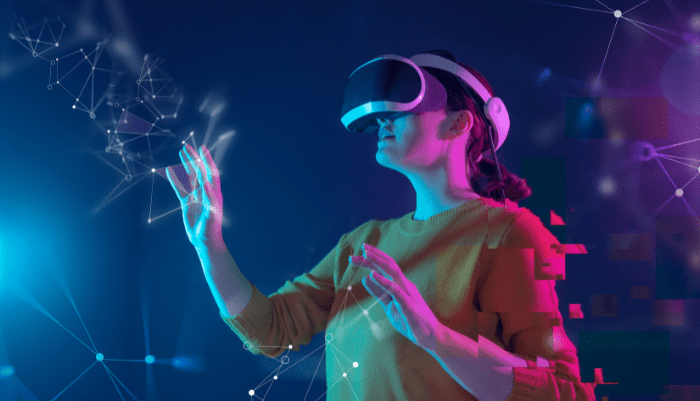Apple’s Vision Pro goggles generate a mixed reality that could lead to more isolation and innovation
(CUPERTINO, Calif.) — Reporters are a sceptical bunch, so hearing so many of them raving about their firsthand experience with Apple’s Next Big Thing: the high-priced headset called Vision Pro, a device infused with completely virtual reality as well as augmented reality that projects digital images on top of real-world settings, was unusual.

However, after wearing the Vision Pro for a half-hour demonstration painstakingly staged by Apple, I joined the ranks of many who were blown away by the remarkable technology Apple has packed into the goggles-like headset. Still, the excitement was tempered by the unsettling feeling of having just walked through a portal that may eventually take civilization down another path of digital isolation.

THE POSSIBLE BENEFITS
But first, the important stuff: Vision Pro is a highly advanced technology that is relatively simple to set up and use. The setup necessitates the use of an iPhone to automatically assess your eyes and ears. If you wear prescription glasses (I use contacts), some additional calibration will be required, but Apple says that it will not be difficult.
After that, you’ll immediately discover that putting on the Vision Pro is likewise simple, owing to a knob on the side that allows you to easily ensure that the headset fits comfortably. Unlike other headsets, the Vision Pro isn’t an unattractive piece of nerdware, while the goggles aren’t exactly elegant, like something you could see on a ski slope, jet fighter, or race car.
The Vision Pro is quite simple to use. Users simply push a button above the right goggle to bring up a virtual screen of apps, which includes traditional favorites like photographs, texting, phone calls, video streaming, and web browsing.
To open an app, simply stare at it directly and pinch your thumb and finger together. The same app can be closed with a finger pinch or shifted to the side by holding two fingers together and moving them in the desired direction.
Not surprisingly, Apple’s well-crafted demonstration portrayed the Vision Pro in the best light imaginable. The headset appears to be highly popular for business applications, enhancing productivity, collaboration, and video conferencing, particularly in an era when more work is done remotely.

The Vision Pro can immerse you in magnificent images, 3-D displays of distant places, without generating the unsettling effects seen in other virtual-reality headsets. It can place you in recordings of former memories captured by one of the device’s 12 cameras (the presentation included touching scenes from a child’s birthday celebration and a campfire). It can make watching a 3-D movie, such as the current Avatar picture, feel like you’re in an IMAX theatre while sitting on your own couch. It can transport you to weird worlds (at one point, I stared in awe as a butterfly presented on a virtual screen showing an ancient era seemingly fluttered across the room and landed in my outstretched hand as I sat on a sofa).

And the demo showed just enough of how sporting events appear through the goggles to realize that the powers that be in professional and collegiate football, basketball, baseball, and hockey will find ways to incorporate the technology into subscription services that make viewers feel like they are sitting in the front row.
To Apple’s credit, the Vision Pro is designed in such a way that users can still see individuals around them if they so desire.
THE POSSIBLE DISADVANTAGES
My conflicted views about Apple’s initial attempt into mixed reality originate, strangely, from how well-designed the Vision Pro is by a business that has been at the forefront of game-changing technology on several occasions over the last 40 years, from the Macintosh computer to the iPhone.
It appears that Apple has done something that other tech companies have not done by cracking the code to make both virtual and augmented reality more compelling and less disorienting than a variety of other mediocre headsets have done over the last decade or so.
The only reason the Vision Pro won’t become an instant hit is its price. When it launches in the United States early next year, it will cost $3,500, making it likely that it will begin as a luxury item out of reach for most families — especially since the headset isn’t going to replace the need to buy a new iPhone or Android smartphone every few years.
The most likely scenario is that Vision Pro serves as Apple’s testbed for mixed reality, encouraging the development of more apps created specifically to take advantage of the technology.The next wave will be a slew of other products with similarly compelling technology at lower price points, with a better chance of sucking more people — including children — into a realm that threatens to deepen screen addictions at the expense of real-world human interactions.

